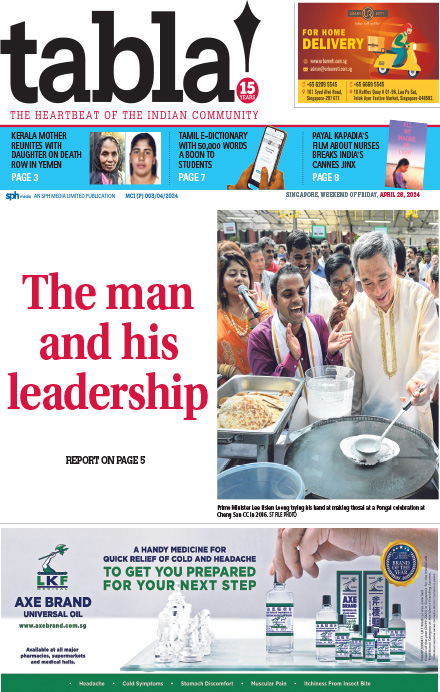ASAD LATIF
Speaking at the Chinese Development Assistance Council's 30th Anniversary Open House on Sept 18, Prime Minister Lee Hsien Loong said that from time to time, people ask why ethnic self-help groups (SHGs), which also include Mendaki, the Singapore Indian Development Association (Sinda) and the Eurasian Association, are still relevant to Singapore's multiracial society.
His answer is worth pondering on.
Mr Lee said: "We will lose something precious if we do not have the SHGs. Because SHGs better understand the unique characteristics and needs of their different communities. They are well-placed to tailor their assistance and customise programmes most relevant for their communities.
"They can also address issues forthrightly, without raising racial or religious sensitivities. SHGs also are a vehicle for more successful Singaporeans to help and support fellow members from their own communities. It is a very natural human impulse, and it strengthens the bonds between members of the community. It builds a sense of self-reliance and pride in the community, which complements their Singapore identity."
There are four points to note in Mr Lee's remarks.
First, SHGs instinctively understand ground realities in their particular communities (and convey them to the national authorities). No one could do this better since a keen understanding of socio-economic issues comes from a reflexive grasp of cultural habits and the communicative bonding of language.
Second, SHGs function as in-group institutions. That is, a Chinese Singaporean who goes to the CDAC, a Malay who approaches Mendaki, an Indian who knocks on the doors of Sinda, or a Eurasian who gets in touch with the Eurasian Association is dealing with another member of the same community and does not have to be defensive culturally in making requests for help. SHGs do not have to learn cultural sensitivity - they are born into it.
Third, it is human nature to help those who belong to the same affiliative cultural universe. Certainly, inter-ethnic solidarity flourishes in the Singapore public sphere, but it does not detract from the readiness of people to help their own ethnic kind. The two impulses are not contradictory but complementary.
Complementarity is also the key principle of the fourth point. The sense of self-reliance and pride in the community that SHGs foster complements their Singapore identity.
This is because the achievement which the groups seek to facilitate gives each community a claim to the general ethic of success on which the survival of Singapore depends ultimately. SHGs exemplify that no community should be a free-rider in Singapore.
A crutch mentality would undermine the robustness of the political economy, which is founded on the unsentimental realisation that the world does not owe Singapore a living.
These ideas underlie the work of Sinda. It was established in 1991 to uplift the socio-economic status of the Indian community in Singapore.
In its own words, Sinda "actively strives to build a well-educated and confident community of Indians that stands together with the other communities in contributing to the progress of multiracial Singapore."
In working closely with volunteers, schools and grassroots organisations, Sinda "has steadily evolved into a credible organisation that serves as a pillar of the Singapore Indian community".
A pillar of the Indian community and one of the four pillars of multiracial Singapore - that is Sinda's role. It is one that both Indians and other Singaporeans should be proud of.
Of course, there is a strong case to be made for inter-agency collaboration among the four SHGs. This does occur in crucially overlapping areas of national experience.
Education is a fine example. The jointly-organised Collaborative Tuition Programme helps low-income families gain access to affordable tuition. Geriatric issues could be the venue of another area of collaboration given that they will have equal agency among the races in a greying Singapore.
While common programmes should be expanded, it is important that SHGs retain their institutional role in meeting the educational, economic and other social needs of the communities which they represent.
Sinda and the other self-help groups have gained substantial social capital by catering to the needs of ethnic communities within Singapore's general multiracial framework. This accumulation of reputational capital must continue.
The Government, on its part, will have to continue as an impartial arbiter among the races, for it is exactly this quality (which is extremely rare in post-colonial nations) that has brought multiracial Singapore where it is today.
However, impartiality (as in the supreme example of the administration of justice) does not equate with neutrality regarding the balance of economic and social affairs.
An activist Government must continue with its interventions in the internal affairs of the ethnic communities so that they do not drift apart but cohere as integral parts of a common, evolving whole.
The writer is a leader writer for The Straits Times.



